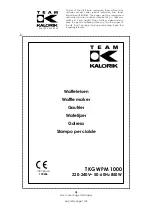
7
Printer must be calibrated for each label correctly
Gap sensing: Gap sensing must be used at all times; this will use the
leading edge of the frame label to align the print with the commands sent
from your software. Calibration of the Gap levels is required each time a
different label type is used. This can be found under advanced printer
settings, Gap Levels.
Important Settings
Darkness: Darkness should be adjusted to achieve optimal print quality.
Slowest speed: The slowest print speed that is available should be used to print
Compound labels: This is typically 2 inches per second.
Advanced printer adjustments: Pitch and offset should be set to 0mm.
Print Mode: Print Mode should be set to continues, with No Back feed. This is to avoid causing damage
to the printer. The thicker IQ labels can damage the RFID antenna bracket if the off mode is used. This
is due to the labels catching on the bracket as they back feed.
Printer Antenna
Sato CL4NX offers two antennas for RFID encoding: Standard and Short. Only one antenna can be used
for encoding, not both at the same time. For encoding Omni-ID labels the Short antenna is
recommended.
Содержание Sato CL4NX
Страница 1: ...PAG000726 02 072016 Omni ID Sato CL4NX Guide Omni ID office locations US UK China India Germany...
Страница 10: ...10 The table below provides the optimal settings for all variants of Omni ID IQ Label tags...
Страница 12: ...12...
Страница 13: ...13...
Страница 16: ...16 IQ 100 in printer media facing out antenna facing up IQ 400 in printer media facing out antenna facing up...



































